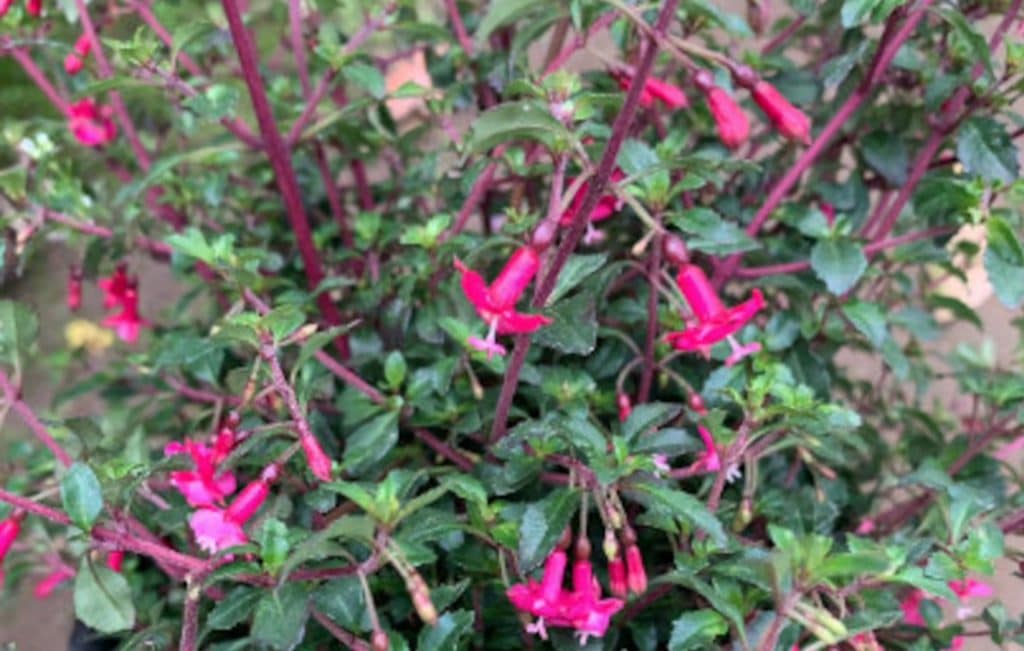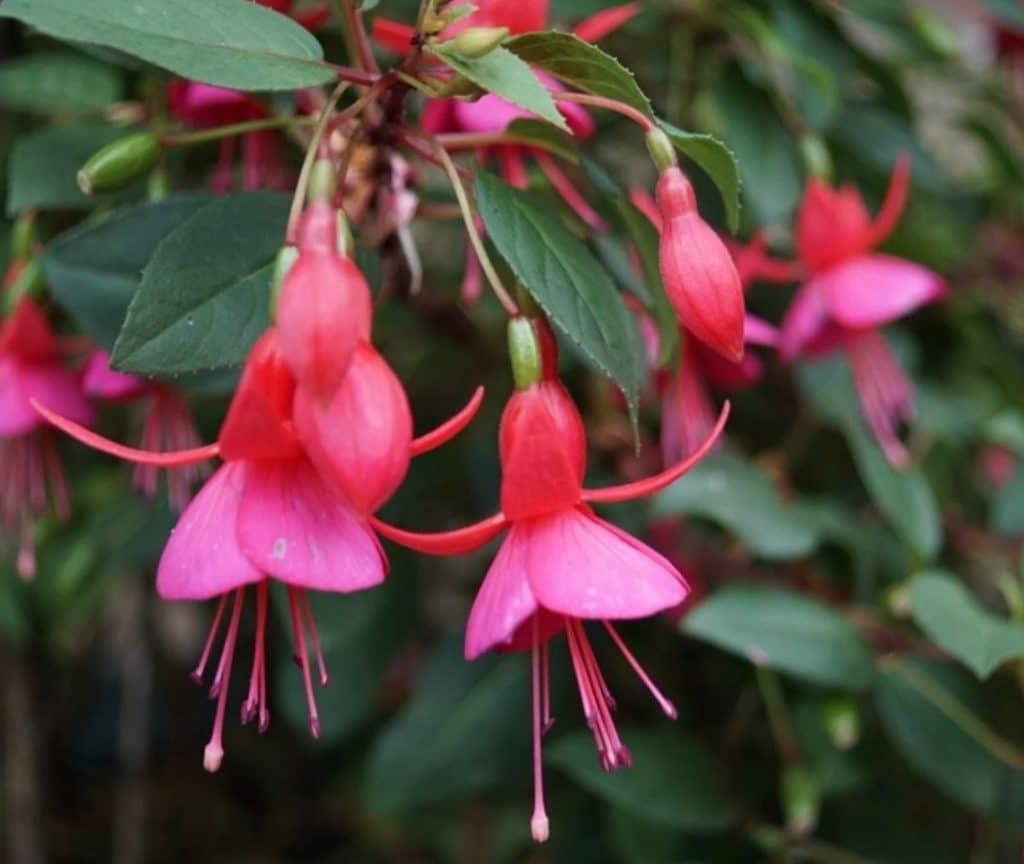Fuchsia thymifolia is a fantastic shrub that can grow to about 2 to 3 feet tall and also spreads. It has bright green, glossy leaves and small, pink, tubular flowers that bloom in the spring and throughout the summer months, often until the fall.
Fuchsia thymifolia is commonly referred to as the thyme leaves fuchsia and is a great addition to any garden. Let’s look at how to grow and care for a Fuchsia thymifolia plant.
What is a Fuchsia Thymifolia (Thyme-leaved fuchsia)?

Fuchsia thymifolia is an evergreen shrub that originates in South America and grows most commonly in Mexico and northern Guatemala. It’s part of the Onagraceae botanical family and has tubular shaped flowers and shiny leaves.
The flowers are either red or pink and bloom in the early spring. The flowers are generally long-lasting, and you’ll find that your plant looks attractive throughout the summer and fall months.
The fuchsia thymifolia plant can grow to about two to three feet tall and wide, making it an excellent hedge or border plant.
Fuchsia thymifolia is hardy in USDA zones 8 to 10 but can be grown as a houseplant in other areas. In the garden, it prefers full sun to partial shade and well-drained soil. It’s drought-tolerant and easy to care for, making it a great choice for novice gardeners.
The good news is that the Fushia Thhymifolia plant doesn’t have any toxic compounds in its leaves, flowers, or stem. This means you can grow it without worrying that the plant will be toxic to pets, livestock, or children if consumed.
How to grow a Fuchsia Thymifolia
Fuchsia thymifolia can be grown from seed or cuttings. The seeds should be sown in the spring and will germinate in about two weeks. The plants can be transplanted when they are about six inches tall.
Cuttings can be taken in the spring or summer and rooted in water or soil. Once they have rooted, they can be transplanted to the garden. You can also divide a large Fuchsia thymifolia by digging it up and cut it into several pieces with a shovel. Each piece should have at least one good root so that it can be replanted. Here are some tips to help you care for your plant.
Sunlight needs
Fuchsia thymifolia prefers full sun to partial shade. It will do well in areas that get a few hours of direct sunlight each day.
Water requirements
The fuchsia thymifolia should be watered regularly, especially during the first year after planting. Make sure the soil is moist but not wet. You can water it once or twice a week, depending on the climate and soil type.
Fertilization
Fuchsia thymifolia should be fertilized with a balanced fertilizer twice a year. You can also use an organic fertilizer like compost or manure.
Pruning
Fuchsia thymifolia should be pruned to maintain its shape or to keep it compact. You can trim it back during the fall after it finishes blooming.
Soil
Plant in well-drained soil to help the plant thrive. This variety can tolerate a range of soils, including sandy or clay-like soils. The plant prefers a pH of around 6.8 to 7.5, which is neutral to slightly acidic. You’ll need to check the soil pH before planting the fuchsia thymifolia in your garden or potting it up as a houseplant.
Pests and disease
As far as pests go, the plant is pretty pest-free. You may find that some common garden insects are attracted to your plant. These can usually be picked off and disposed of. If an insect infestation occurs, you can use neem oil or an insecticidal spray to control the pest population.
Conclusion
Fuchsia thymifolia is a great addition to any garden and is easy to care for. With a little bit of basic maintenance, you can enjoy this shrub’s beautiful flowers all summer long.
Fuchsia thymifolia prefers full sun to partial shade and well-drained soil. It should be watered regularly, depending on your climate, especially during the first year after planting. You can also fertilize your plant using a balanced fertilizer twice annually or add manure to the soil. The fuchsia plant can be pruned to maintain its shape or to keep it compact.
Related: California native shade plants
